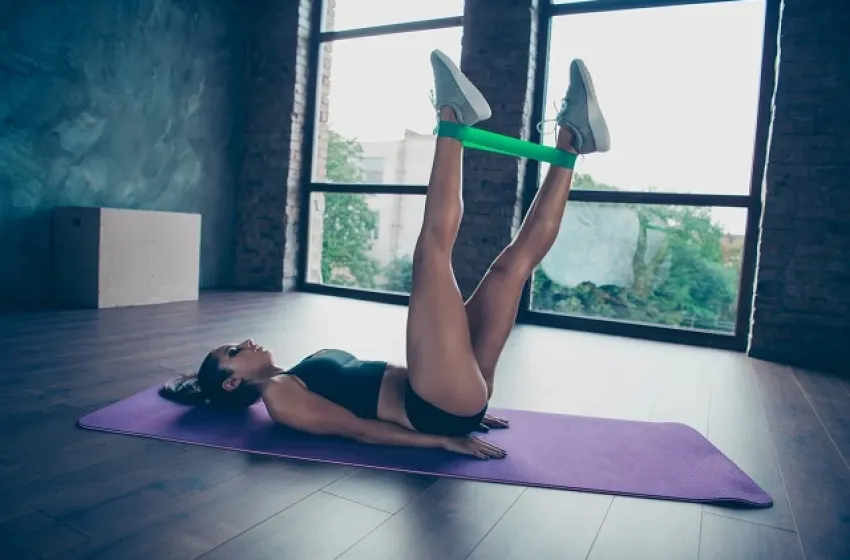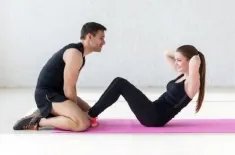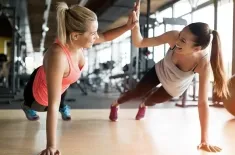Workout Tips at Home
How much do you love your body? While some people give themselves a hard time for gaining a few pounds, most of us take our health for granted: we're sitting here reading an article without sweating from the effort. But as it turns out, even if you've never worked out in your life, you can actually keep fit and stay healthy. Here are five tips on how to get fitter in no time at all through home workouts!
How much do you love your body? While some people give themselves a hard time for gaining a few pounds, most of us take our health for granted: we're sitting here reading an article without sweating from the effort. But as it turns out, even if you've never worked out in your life, you can actually keep fit and stay healthy. Here are five tips on how to get fitter in no time at all through home workouts!
No gym is required. If paying membership fees to work out just isn't possible because of your budget or schedule, don't worry - there are plenty of ways to work up a sweat without going to a gym! For example, instead of taking the elevator when going up one flight of stairs would suffice, take the stairs twice. You could also be creative and do some chores while working up a sweat: for example, vacuum your carpet or mop your floors - you'll be done with your workout in no time!
Get active on your commute. In addition to getting more exercise at home than you would normally get from going to the gym, it's possible to save time as well: if you walk rather than drive, or if you bike instead of taking public transportation, the extra minutes that you spend getting fitter will add up eventually. Leave an hour earlier than normal for work every day by biking instead of driving (for example), and within 10 days (2 weeks) you'll have saved over two hours!
Do that every week for a year, and you'll have saved around 13 days! You can make use of those extra hours in productivity at work, or by spending time with your family.
Dynamic and Static Stretches
If you want to improve your flexibility, there are two different types of stretches that you can use: dynamic and static. Dynamic stretches involve moving the muscle through its full range of motion in slow, controlled movements. This type of stretching is very important for any sport or activity where you need to stretch your muscles while they are already warm. Examples of dynamic stretches include arm circles, trunk twists and leg swings.
Static stretching is more about using the muscle to its max capacity and holding it for a few seconds. This type of stretching helps with balance and coordination as well as flexibility. By performing static stretches when your muscles are warm will provide better results for increased flexibility. Static stretches can help you improve your posture, decrease your risk of injury from sudden movements or quick starts and stops, loosen stiff joints and prevent cramping by helping relax tired muscles.
Warm up Exercises
Before doing any exercise that uses large muscle groups (legs, chest, back), make sure to do some easy exercises to warm up your muscles. Jogging in place or another light cardio activity will provide the body with much needed oxygen, and raise your core body temperature for an optimal warm up. Light stretching is also a great way to prepare the body for more intense exercises using large muscle groups. If you don't have time to warm up, at least do some light stretching after finish your workout.
The best way to get the most out of a warm up is to start with exercises that use smaller muscle groups and work your way up to the larger ones. For example, flex your wrist for ten seconds, then do a few arm circles for another ten seconds. Then move on to leg stretches for another twenty seconds before doing any dynamic activity such as jogging or jumping rope. After about five minutes of warm-up exercises you should be ready to begin exercising using large muscle groups such as running, weight lifting, cycling or rowing machines.
Cool Down Exercises and Stretching
Stretching immediately after each exercise session allows blood vessels in your muscles time open up to circulate much oxygen and nutrients in the muscles that have just been worked hard.
As you cool down, try something like this: Stand up straight with legs slightly apart and raise your arms out to your sides. Stretch them as high as you can above your head then reverse so that they are stretched out behind you. Then cross one arm over the other and repeat several times until both sides of your body are equally stretched out. Repeat this process for all major muscle groups including knees, feet, thighs and legs etc. It is also important to stretch after static exercises such as weight lifting or rowing which work on large muscle groups.
Cooling down properly allows muscles time to relax so that they don't cramp up during a workout session or when doing everyday tasks. It also reduces the risk of injury when carrying out exercise and training, particularly if your muscles are warm and more fluid than usual after a workout. Cooling down also allows excess lactic acid to be removed from the body through deep breathing or even light jogging which helps you to recover quicker. Be sure to drink plenty of water during your cool down as well because this aids better circulation by helping blood flow back into the heart more easily.


































